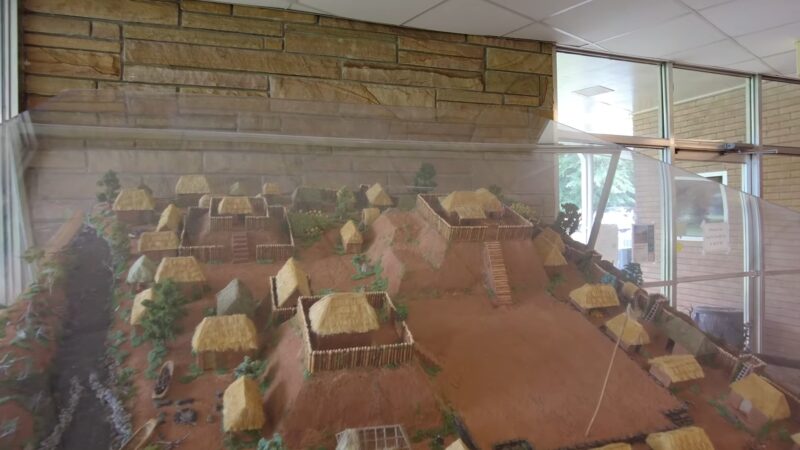The Etowah Indian Mounds stand as a testament to a prehistoric culture that once thrived in North America. These ancient earthworks, located in the state of Georgia, offer a window into the lives of the Mississippian people who constructed them over a millennium ago.
Now, we want to point out the significance of the mounds, the culture of the people who built them, and the insights gained from archaeological endeavors, by going through all the relevant details.
Civilization’s Overview
The first thing we would like to talk about is an overview of this civilization.
Location and Description of the Site
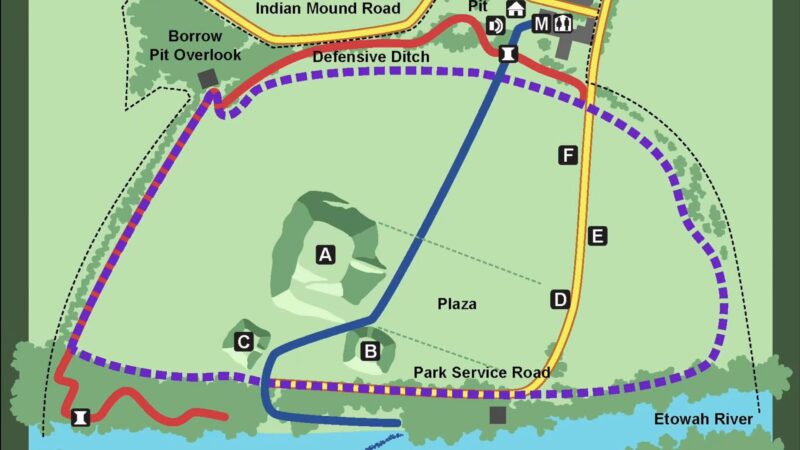
The Etowah Indian Mounds are situated in Bartow County, Georgia, encompassing over 54 acres along the Etowah River. This historic site boasts six earthen mounds, a plaza, a defensive ditch, and evidence of residential and farming areas.
The largest mound, Mound A, rises over 63 feet high, dominating the landscape as a testament to the site’s historical importance. The site’s layout includes a central plaza used for public gatherings and ceremonies, surrounded by mounds, which had various functions including ceremonial and burial purposes.
The defensive ditch indicates a need for protection and strategic planning against potential threats. The mounds themselves were engineered with precise alignments to solar events, showcasing the builders’ astronomical knowledge.
Historical Significance of the Mounds
The Etowah Mounds are a crucial link to the Mississippian culture, which flourished from around 800 to 1540 CE. These structures served not only as physical constructs but also as cultural symbols of socio-political power and religious significance.
The mounds are a canvas, displaying the complex societal structure of their builders and their sophisticated understanding of engineering and agriculture.
Who Were the Mississippians?
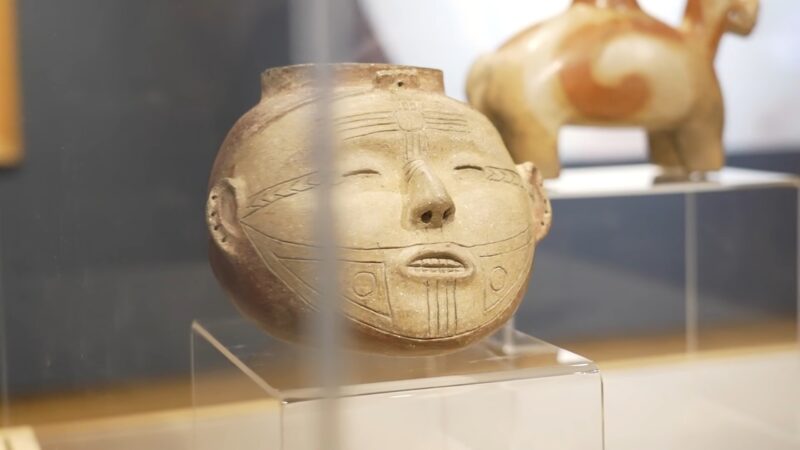
The Mississippians were an indigenous people known for their complex societies and mound-building prowess. They inhabited the Mississippi River Valley and its tributaries, leaving behind a legacy of large, sophisticated communities interconnected by trade and shared cultural practices. Mississippian culture was characterized by:
- A hierarchical social structure with a ruling elite.
- An economy based on agriculture, particularly the cultivation of maize.
- A rich tradition of artistry, as seen in their pottery, textiles, and other artifacts.
Their society was complex, with a reliance on trade networks that extended far and wide, influencing and being influenced by distant cultures.
The Role of the Mounds
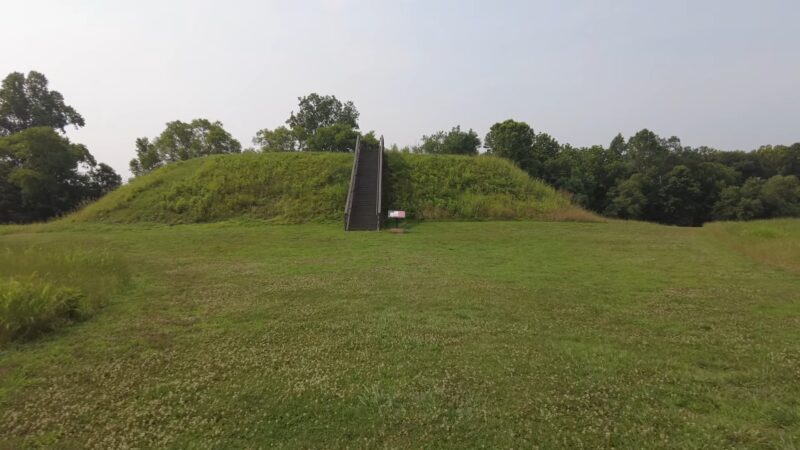
The mounds served multiple purposes within Mississippian society:
- They were platforms for the homes and temples of the elite.
- They acted as stages for ceremonies and important communal events.
- The mounds were also burial sites, with the elite often interred with elaborate grave goods.
Mississippian’s vs. Other Civilizations
The Mississippian civilization, with its grand mound complexes and advanced societal structures, stands as a remarkable chapter in the pre-Columbian history of North America.
Each civilization, with its distinctive adaptations to the environment and cultural innovations, contributes to a richer, more nuanced narrative of North America’s ancient past.
| Feature | Mississippian Civilization | Ancestral Puebloan Civilization | Pacific Northwest Civilizations |
|---|---|---|---|
| Time Period | c. 800 – 1540 AD | c. 100 – 1600 AD | 5000 BC – 1800 AD |
| Housing | Wattle and daub houses | Cliff dwellings, pueblos | Plank houses |
| Food Source | Agriculture (maize-centric) | Agriculture, hunting, and gathering | Fishing, hunting, and gathering |
| Social Structure | Chiefdoms with hierarchical structure | Clan-based, with leadership roles | Ranked societies with chiefs |
| Trade | Extensive trade networks | Trade networks, but less extensive than Mississippians | Extensive trade, especially in coastal regions |
| Art | Pottery, shell engraving, stone carving | Pottery, basketry, rock art | Totem poles, masks, weaving |
| Religious Practices | Mound-building for ceremonies and burials | Kivas for ceremonies | Potlatch ceremonies, animistic practices |
| Notable Architecture | Earthen mounds | Great houses, kivas | Big houses, totem poles |
| Geographical Range | Southeastern United States | Southwestern United States | Coastal regions from California to Alaska |
Excavations and Findings at Etowah
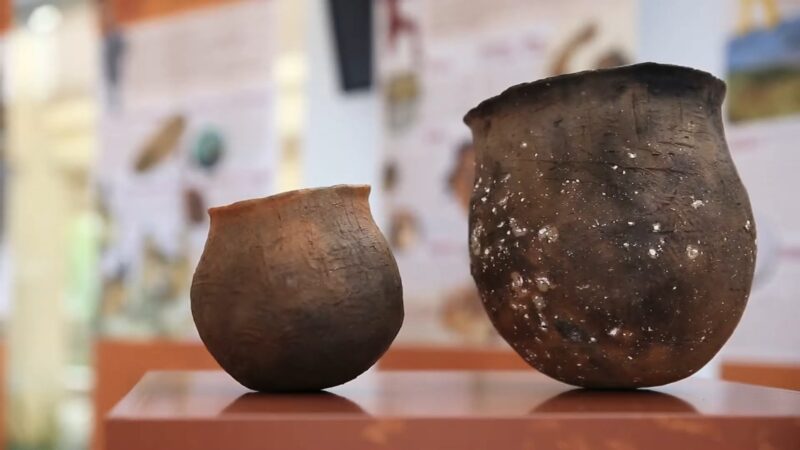
Archaeological excavations at Etowah have uncovered a wealth of information. The careful unearthing of the site has revealed the structural details of the mounds, the layout of the plaza, and the remnants of daily life.
These findings have allowed researchers to piece together the lifestyle and cultural practices of the Mississippians.
Artifacts such as copper plates, shell gorgets, and stone statues have been instrumental in piecing together the life and beliefs of the Etowah people. These items, often found in burial mounds, suggest a society with complex religious beliefs and social structures.
The craftsmanship of these artifacts indicates a high level of artistry and skill. The artifacts provide clues to the societal context and the trade relationships of the Mississippians. The presence of materials not native to the region, such as copper and marine shells, points to a broad trade network.
The iconography depicted on these artifacts also offers insights into the spiritual and mythological worldviews of the mound builders.
Theories and Debates
Scholars have proposed various theories regarding the mounds’ purpose, ranging from purely functional to deeply spiritual. Some suggest they were primarily for high-status housing or as platforms for temples, while others argue for their role in celestial alignments and ceremonies.
Debate continues over the exact nature of the social and political structures of the Mississippian people. While some evidence points to a centralized authority with a powerful ruling class, other signs suggest a more communal and distributed power system.
The true nature of their society remains a topic of ongoing research and discussion.
- The Etowah Mounds do not exist in isolation.
- They are part of a larger network of mound sites across the Southeastern United States.
- Comparing these sites has led to broader theories about cultural exchange, migration patterns, and shared religious practices among the various Mississippian communities.
The Legacy
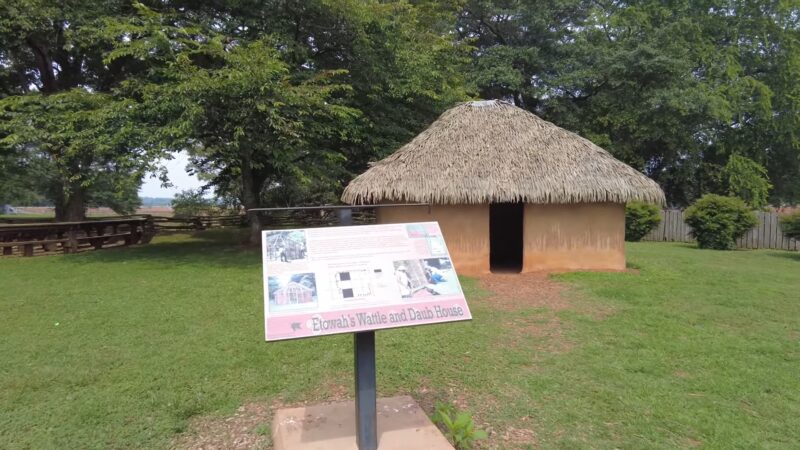
The decline of the Mississippian culture is a subject of much speculation, with theories including environmental changes, overpopulation, and conflict.
By the time European explorers arrived, the great mound-building societies had largely disappeared, leaving behind their monumental earthworks as silent witnesses to a once-vibrant culture.
Today, the Etowah Indian Mounds are a protected historical site. Efforts to preserve the mounds include careful management of the landscape and ongoing archaeological research.
Educational programs aim to share the significance of the site with the public, ensuring that the legacy of the mound builders continues to be appreciated and understood.
FAQs
Are the Etowah Indian Mounds part of a larger network of mound sites?
Yes, the Etowah Mounds are part of a broader network of Mississippian mound sites that stretch across the Southeastern United States.
What is the largest mound at the Etowah site?
Mound A is the largest at the site, standing at approximately 63 feet tall.
How are the Etowah Indian Mounds preserved?
The site is managed by the Georgia Department of Natural Resources, and ongoing preservation efforts include maintaining the landscape, protecting the mounds, and conducting research.
What can we learn from the Etowah Indian Mounds?
The mounds provide valuable information about the social structure, trade, religious practices, and daily life of the Mississippian people. They are a significant resource for understanding prehistoric Native American history in the Southeastern United States.
The Bottom Line
The Etowah Indian Mounds are a cultural treasure, providing insight into the sophisticated society of the Mississippian people.
Through archaeological research and preservation efforts, we continue to learn about the mound builders’ way of life, their beliefs, and their impact on subsequent cultures.
The mounds stand as a monument to human ingenuity and the enduring legacy of North America’s indigenous peoples.
If you would like to learn more about this region, be sure to visit our website.

